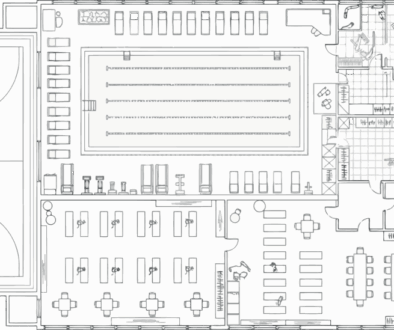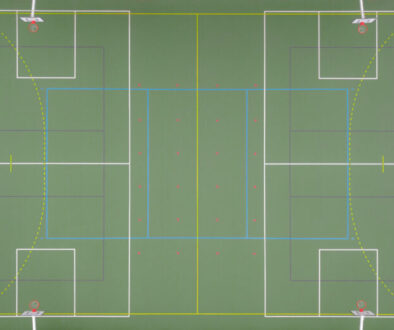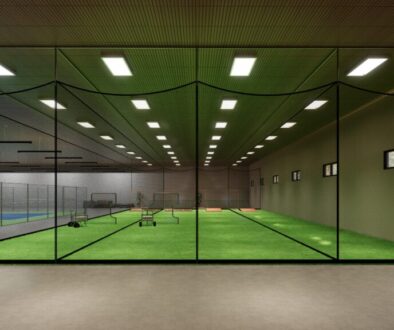How to Start An Indoor Sports Facility: A Step-By-Step Checklist
Opening an indoor sports facility is exciting, but it’s also a major undertaking. We’ve heard from many people who have the passion but aren’t sure where to start. To help, we’ve put together a practical checklist of what you need before you open your doors. If you’re wondering how to start an indoor sports facility, here’s what you should focus on:
1. Create A Solid Business Plan
Before you start looking at buildings or turf, put your ideas on paper. A clear business plan should outline your mission, your target market, services you’ll offer, projected revenue streams, and startup costs. This roadmap will keep you focused and can be helpful when talking to investors.
2. Choose The Right Location
One of the most important aspects of your business plan is finding the right location. Your facility’s location can make or break your business. A study found that 87% of consumers will, on average, only visit locations within a 15-minute drive. If your target audience isn’t close to your location, they won’t visit. Additionally, you should look for a space that is both easy to access and cost-effective. Rent or mortgage costs can quickly eat away at your profits if you choose poorly. A great location balances convenience for your customers with long-term financial sustainability.
3. Understand The Competitive Market
Before you open, research who else is serving your area. What facilities already exist? What do they offer, and where are the gaps you can fill? A clear understanding of your competition helps you position your business to stand out. Competition isn’t always bad. Actually, it can point you towards new opportunities. If nearby facilities are focused on something, you can position your business towards meeting any needs they’re not addressing.
4. Work With The Right Vendors
You’ll need reliable vendors to supply turf, courts, nets, and other essential equipment. Good vendors don’t just sell products. They provide guidance on what works best for your space, helping you avoid costly mistakes. Many vendors also offer support with layout and design. Their experience in working with other facilities may be invaluable as you figure out how to maximize your space. However, you shouldn’t base your decision on price alone. The cheapest option may end up costing you more in replacements and repairs down the road.
A building design can also add value. Designers may look at the usability of your building in ways that vendors may not. The right design ensures your space feels professional and works for everyone in the facility, from members to instructors.
5. Protect Yourself Legally
An attorney is essential for setting up an LLC, creating operating agreements, and drafting waivers to protect your business from liability. Skipping this step can cost you far more in the long run. Sports facilities carry risks, including player injuries, so having the right legal protections in place is critical. A lawyer can also advise on insurance and compliance with local laws. Your attorney is an important part of your setup, just like vendors or trainers.
6. Invest In Management Software
Handling scheduling, memberships, payments, and communication with your athletes can become complex quickly. Sports facility management software streamlines these processes, reduces staff workload, and makes it easy for clients to book online. The right system can also give you valuable insights into your business. Instead of patching together spreadsheets and phone calls, software keeps everything in one place and helps your team stay organized.
7. Build Out Your Network
Your facility won’t thrive in a bubble. Start building relationships with local schools, clubs, travel teams, and community organizations. A strong network provides referral opportunities, partnerships, and long-term growth. Networking also helps you stay plugged into your local sports community. The more people who know about your facility, the more opportunities you’ll have for rentals, tournaments, and team partnerships. Strong connections can also open doors for sponsorships and collaborations that expand your reach.
8. Recruit Instructors and Trainers
High-quality staff can make your facility stand out. Whether it’s coaches for specific sports or personal trainers, your team will drive both customer satisfaction and retention. Don’t just look at qualifications during the hiring process. Look for staff who share your vision and values. Instructors are the face of your facility, and their ability to connect with clients will make the difference between one-time visitors and long-term members.
Final Thoughts On How to Start An Indoor Sports Facility
Starting an indoor sports facility takes more than passion; it takes planning, strategy, and the right team. Use this checklist to avoid common pitfalls and set your business up for success. If you’re still unsure how to start an indoor sports facility or need help working through the details, our experts can guide you every step of the way. Book a custom consultation now!



